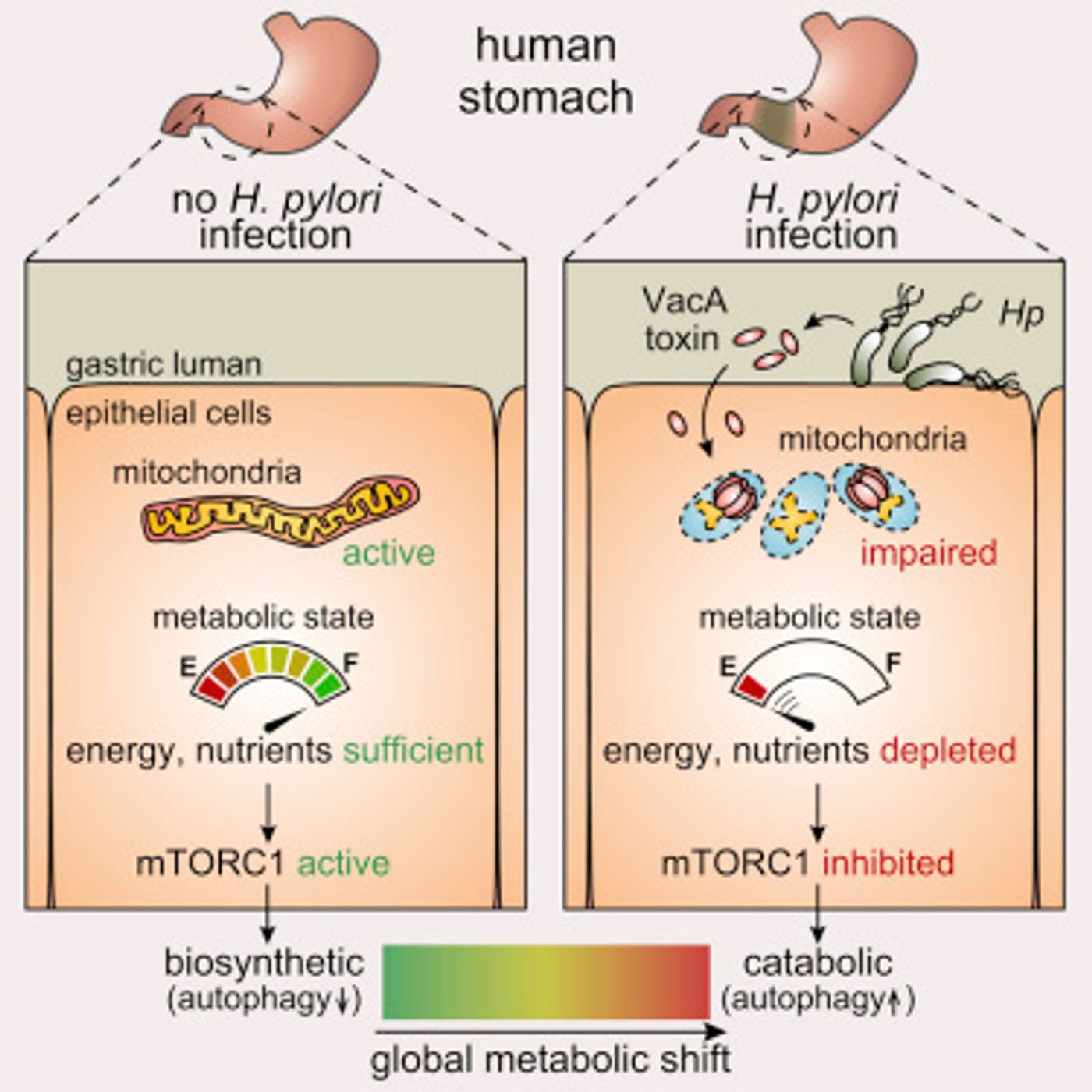Ulcer-causing Microbe Found to Disrupt Mitochondria
It’s been known for some time that a bacterium can cause several serious stomach ailments, including ulcers, gastritis and stomach cancer. Researchers have now found out how that pathogen, Helicobacter pylori, can get around the defensive mechanisms of the immune system. The microbe halts the production of energy in cells that line the stomach. Those cells create a protective barrier that can shield us from infection. Understanding how H. pylori lay the groundwork for an infection will help investigators fight them more effectively. This research has been reported in Cell Host & Microbe.
"H. pylori infects and causes gastritis in half the world's population. It is transmitted from person to person, usually during the first two years of life," explained the leader of the research, University of Illinois microbiology professor Steven Blanke. "Long-term infection can extend over decades, and most people never experience any symptoms of infection until the disease has progressed to an advanced state."
The acidic environment of the human stomach is the only place H. pylori is known to exist, Blanke said. Exactly where the infection comes from is still not known.
"When any barrier in the human body is colonized by a pathogen, the immune system sets off a series of predictable counterattacks to reclaim the infected space," said Blanke. "H. pylori cripples these immune counterattacks by going straight to the source of a host cell's power to shut down energy production."
For this work, the scientists used stomach cells to determine that H. pylori deliver a toxin to cells from the outside; the toxin acts directly on the cellular powerhouse, the mitochondria.
"The toxin disables the mitochondria, resulting in a loss of energy production," Blanke said. "When the cell tries to compensate by reallocating resources from other parts of the cell, a signal is triggered directing the cell to stop production and start breaking things down."
Without the mitochondria to supply energy, the cell is at a major disadvantage and can’t fight off an infection. The pathogen can then take hold.
"The results of these studies provide an important example of how pathogens effectively target host metabolism in an effort to establish an enduring foothold within the host," Blanke concluded.
Learn more about the difficulties developing an accurate diagnostic test for H. pylori infections from the video.
Sources: Phys.org via University of Illinois at Urbana-Champaign, Cell Host & Microbe










